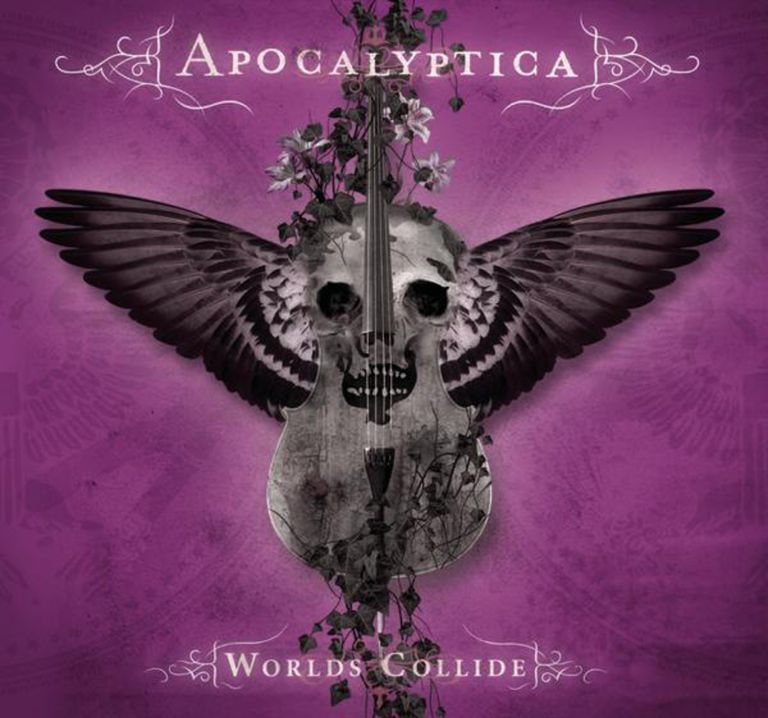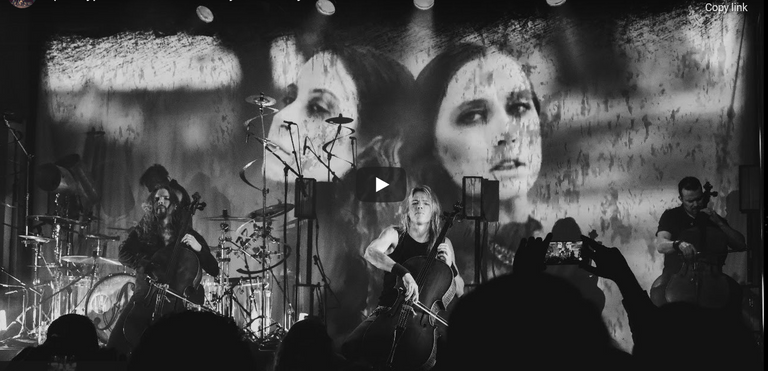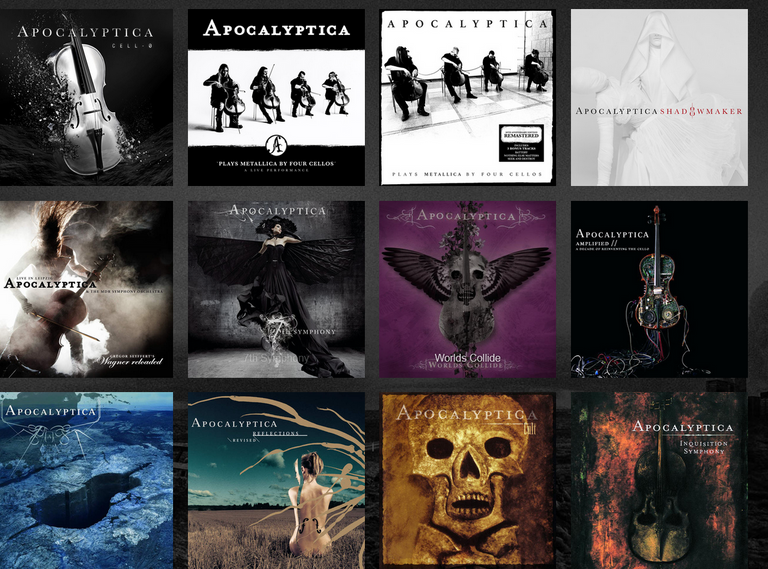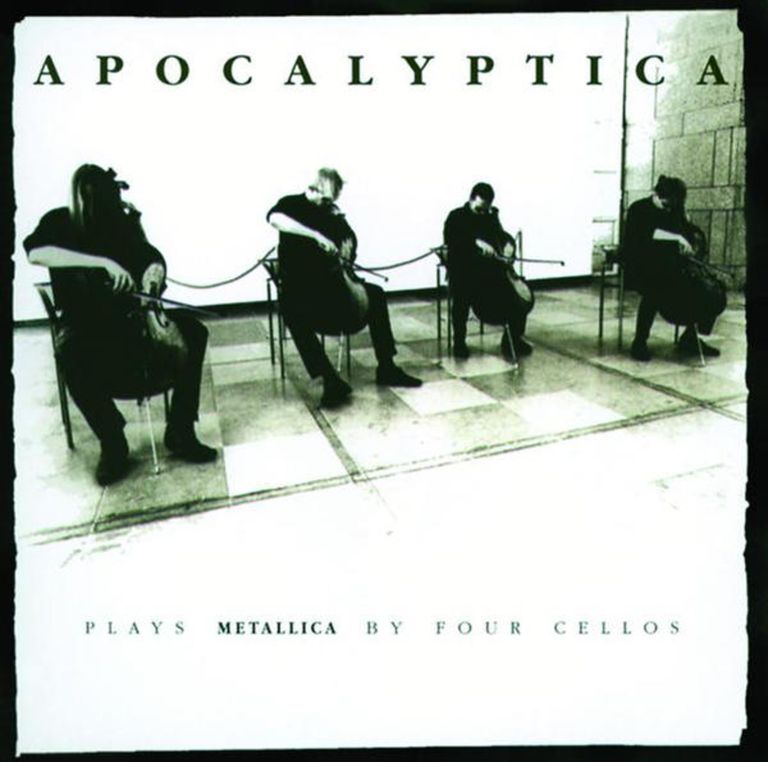
Hace pocos días atrás, en mi primer post en esta Comunidad, les hablé de una banda de Heavy Metal (Power Metal para otros) entre esa línea tan delgada que divide un género musical de otro.
Esa banda se llama Rhapsody, está formada por músicos triestinos (norte de Italia) y tiene un gran consenso en Alemania -donde ha grabado todos sus discos- y en los países del área balcánica: Eslovenia, Croacia, Serbia, Montenegro. No porque su música reconozca orígenes de estos países, más bien son melodías célticas o medioevales de la región normando-británica, sino porque su "lugan de origen" -Trieste- está muy vinculado a estos países, aparte de confinar con todos ellos. Más consustanciado con ellos que con el resto de Italia.
Hoy, en cambio me voy a ir al otro extremo de Europa, la región nórdica que siempre ha dado excelentes músicos, sobre todo a nivel instrumental.
Y en este contexto, geográfico y musical, les quiero hablar de Apocalyptica una banda siempre relacionada con el género musical de metal alternativo y chelo metal formada en 1992 por cuatro violonchelistas finlandeses graduados una academia de música clásica.
La mayor parte de su repertorio está caracterizada por canciones de hard rock/heavy metal con violonchelos.
La descubrí por casualidad en un video de YouTube y a partir de ese momento, hace ya algunos años cuando residía todavía en Italia, comencé a investigar sobre sus orígenes y a descargar algunos de sus conciertos gratuitos cargados en la popular plataforma de videos on line.

A few days ago, in my first post in this Community, I told you about a Heavy Metal band (Power Metal for others) between that thin line that divides one musical genre from another.
That band is called Rhapsody, is formed by triestine musicians (north of Italy) and has a great consensus in Germany -where they have recorded all their albums- and in the countries of the Balkan area: Slovenia, Croatia, Serbia, Montenegro. Not because his music recognizes origins from these countries, rather they are Celtic or medieval melodies from the Norman-British region, but because his "lugan de origen" -Trieste- is closely linked to these countries, apart from being confined with all of them. More consubstantiated with them than with the rest of Italy.
Today, however, I am going to the other end of Europe, the Nordic region, which has always produced excellent musicians, especially at the instrumental level.
And in this context, geographical and musical, I want to talk about Apocalyptica, a band always related to the musical genre of alternative metal and cello metal formed in 1992 by four Finnish cellists graduated from a classical music academy.
Most of their repertoire is characterized by hard rock/heavy metal songs with cellos.
I discovered them by chance in a YouTube video and from that moment, some years ago when I was still living in Italy, I started to research about their origins and to download some of their free concerts uploaded on the popular online video platform.
Apocalyptica: Heavy Metal + Chelos + Música clásica. / Apocalyptica: Heavy Metal + Cellos + Classical music.
Así como Rhapsody une mucho del heavy metal con los madrigales medievales, cantos celtas y algo de música clásica, con una serie de coros fenomenales, Apocalyptica es más sobria en sus contenidos, en líneas generales se vinculados directamente con la música clásica y que, ejecutada con violonchelos, y unida al metal es una experiencia verdaderamente fascinante.
Sus comienzos como los de Rhapsody fueron muy humildes. Estudiantes salidos de conservatorios musicales con una neta influencia de la música clásica, tratandola de modificarla y darle un cariz más popular. Fiestas de amigos, celebraciones, para pasar más alto a tocar en algunos clubes, pero siempre con el sello de la no-profesionalidad, del amateurismo si se me explicar aplicar este concepto fuera de los deportes.
No era una empresa fácil y sus comienzos si bien no pasaron inadvertidos tampoco lograron el consenso popular que se merecían. A decir verdad, tal vez ni siquiera hoy lo tengan en su totalidad. La calidad no siempre paga, decía un amigo.
Los cuatro amigos que formaban la banda eran: Eicca Toppinen, Paavo Lötjönen, Antero Manninen y Max Lilja, obviamente todos chelistas. En la actualidad quedan algunos y otros se han ido y han sido reemplazados hasta formar el actual quinteto (uno más respecto al cuarteto inicial).
El primer salto de calidad lo hicieron en 1995, cuando después de tocar «Master of Puppets» y «Creeping Death» en el Heavy Metal Club Theatre, un representante de la discográfica Zen Garden, los invitó a grabar un álbum.

Just as Rhapsody unites a lot of heavy metal with medieval madrigals, Celtic chants and some classical music, with a series of phenomenal choruses, Apocalyptica is more sober in its contents, in general lines it is directly linked to classical music and that, performed with cellos, and united to metal is a truly fascinating experience.
Their beginnings, like those of Rhapsody, were very humble. Students out of music conservatories with a clear influence of classical music, trying to modify it and give it a more popular look. Parties of friends, celebrations, to pass higher to play in some clubs, but always with the seal of non-professionalism, of amateurism if I can apply this concept outside of sports.
It was not an easy enterprise and its beginnings, although they did not go unnoticed, did not achieve the popular consensus they deserved. To tell the truth, perhaps even today they do not have it in its entirety. Quality doesn't always pay, said a friend.
The four friends who formed the band were: Eicca Toppinen, Paavo Lötjönen, Antero Manninen and Max Lilja, obviously all cellists. At present, some of them remain and others have left and have been replaced to form the current quintet (one more than the initial quartet).
The first quality leap was made in 1995, when after playing "Master of Puppets" and "Creeping Death" at the Heavy Metal Club Theatre, a representative of the Zen Garden label invited them to record an album.
Homenaje a Metallica. / Tribute to Metallica.
La característica de este primer álbum es que eran todas canciones de Metallica, ya que hasta ese momento en forma amateur y para tratar un poco de reconocimiento tocaban canciones de la consagrada banda estadounidense de rock, curiosamente (o no) fundada por Lars Ulrich baterista y compositor danés. Si bien no connacionales escandinavos todos ellos.
También a manera de homenaje y agradecimiento a Metallica le dieron a su banda el nombre de Apocalyptica que es un acrónimo entre apocalypse y Metallica.
El disco se llamó Plays Metallica by Four Cellos y vendió más de un millón de copias en todo el mundo. Comenzaban a despegar y a hacerse conocer fuera de su Helsinki natal. Al disco siguieron dos conciertos en la capital finlandesa.
Tres años más tarde luego de varios proyectos en estudio lanzaron Inquisition Symphony en el cuúl agregan a algunas canciones de Metallica otras de las bandas Sepultura, Faith No More y Pantera. Pero lo novedoso es que por primera vez incluyen tres temas propios de Eicca Toppinen -uno de sus fundadores- y una del compositor noruego Edvard Grieg llamada In the Hall of the Mountain King
A partir de este momento comienzan a definir su propio estilo y también después de este álbum comienza su primera gira mundial.
Un estilo musical que los va a llevar -a diferencias de otros grupos musicales- siempre a elegir atentamente los temas musicales de cada album y a grabar uno a dos o tres años de distancia del otro.
En esta línea pasan de nuevo dos años antes de grabar Cult en el 2000, esta vez sin Antero Manninen la primera baja del cuarteto original quien decide continuar con sus estudios de música clásica siendo substituído por Perttu Kivilaakso quien en sus actuaciones amateurs había ya hecho parte de la banda, pero como era menor, al profesionalizarse Apocalyptica se había hecho de lado.
Por otro lado en este album ya comienzan las colaboraciones que serán un sello distintito en toda su carrera, ya sea conciertos como álbumes grabados en estudio. Y también agregan otras novedades como instrumentos de orquesta y colaboraciones vocales.

The characteristic of this first album is that they were all Metallica songs, since up to that moment in an amateur way and to try a little recognition they played songs of the consecrated American rock band, curiously (or not) founded by Lars Ulrich, Danish drummer and composer. Although not Scandinavian nationals all of them.
Also as a tribute and thanks to Metallica they gave their band the name Apocalyptica which is an acronym between apocalypse and Metallica.
The album was called Plays Metallica by Four Cellos and sold over a million copies worldwide. They were starting to take off and become known outside their native Helsinki. The album was followed by two concerts in the Finnish capital.
Three years later, after several studio projects, they released Inquisition Symphony in which they added to some Metallica songs other songs from Sepultura, Faith No More and Pantera. But the novelty is that for the first time they include three of their own songs by Eicca Toppinen -one of its founders- and one by the Norwegian composer Edvard Grieg called In the Hall of the Mountain King.
From this moment on they begin to define their own style and also after this album they start their first world tour.
A musical style that will lead them - unlike other musical groups - always to choose carefully the musical themes of each album and to record one two or three years away from the other.
In this line they spend again two years before recording Cult in 2000, this time without Antero Manninen the first casualty of the original quartet who decides to continue with his studies of classical music being substituted by Perttu Kivilaakso who in his amateur performances had already been part of the band, but as he was a minor, when Apocalyptica became more professional he had been left aside.
On the other hand, in this album the collaborations that will be a hallmark throughout their career, both in concerts and on studio albums, have already begun. And they also add other novelties such as orchestral instruments and vocal collaborations.
Un estilo propio. / A style of its own.
De a poco comienzan a entrar en una nueva etapa, lenta como el tiempo en Escandinavia. Todo debe seguir su recorrido. Sin prisa pero sin pausa como dice el viejo refrán.
Los conflictos en la banda comienzan a aparecer discutiendo como normalmente ocurre en estos casos la "ideología" musical de la banda. Eso los lleva a cambiar de compañia discográfica y uno de elos fundadores Max Lilja en desacuerdo decide abandonar. Queda formado un trío y la disyuntiva de que hacer.
Y aquí entra la incógnita de que tipo de instrumento agregar: otro chelo? O incorcoprar una batería, algo que hasta ese momento era impensable? Y aqui entra en juego un viejo amigo, Dave Lombardo, quien ya había colaborado en un concierto de la banda en Países Bajos. Posteriormente Lombardo es reemplazado por Mikko Sirén.
De los componentes originales de la banda quedan solo Eicca Toppinen y Paavo Lötjönen. Perttu Kivilaakso se agrega en 1999, Mikko Sirén en el 2005 y después de una carrera como solista se reintegra Antero Manninen por lo cuál podemos decir que tres integrantes del cuarteto inicial integran en la actualidad lo que se ha transformado en un quinteto.
En la útima década graban solo tres discos: 7th Symphony en el 2010, Shadowmaker en el 2015 y el último Cell-0 -totalmente instrumental- en el 2020.

Little by little they begin to enter a new stage, slow as the weather in Scandinavia. Everything must follow its course. Without haste but without pause as the old saying goes.
The conflicts in the band begin to appear discussing as usually happens in these cases the musical "ideology" of the band. That leads them to change record company and one of the founders Max Lilja in disagreement decides to leave. A trio is formed and the dilemma of what to do.
And here comes the question of what kind of instrument to add: another cello? Or to incorporate a drum kit, something that until that moment was unthinkable? And here comes into play an old friend, Dave Lombardo, who had already collaborated in a concert of the band in the Netherlands. Later Lombardo is replaced by Mikko Sirén.
Of the original members of the band, only Eicca Toppinen and Paavo Lötjönen remain. Perttu Kivilaakso joins in 1999, Mikko Sirén in 2005 and after a solo career Antero Manninen reintegrates, so we can say that three members of the original quartet are now part of what has become a quintet.
In the last decade they recorded only three albums: 7th Symphony in 2010, Shadowmaker in 2015 and the last Cell-0 -totally instrumental- in 2020.
Si quieren deleitarse musicalmente hablando con lo mejor de esta banda les recomiendo The Best of Apocalyptica editado en el año 2002 con sus mejores canciones. Para coleccionar.
Contiene las mejores canciones de prácticamente todos los álbumes grabados.
Merecen un párrafo especial Inquisition Symphony del álbum homónimo, The Hall of the Mountain King del álbum Cult y The Unforgiven del primero de los álbumes del entonces cuarteto: Plays Metallica by Four Cellos.

If you want to enjoy musically speaking the best of this band I recommend The Best of Apocalyptica released in 2002 with their best songs. To collect.
It contains the best songs from virtually every album ever recorded.
Deserving a special paragraph are Inquisition Symphony from the album of the same name, The Hall of the Mountain King from the Cult album and The Unforgiven from the first of the then quartet's albums: Plays Metallica by Four Cellos.

Upvoted. Thank You for sending some of your rewards to @null. Read my last posts to make sure that BLURT burning is profitable for you. Before using this bot please make sure your account has at least 100 BP. Get more BLURT:
@ mariuszkarowski/how-to-get-automatic-upvote-from-my-accounts@ blurtbooster/blurt-booster-introduction-rules-and-guidelines-1699999662965@ nalexadre/blurt-nexus-creating-an-affiliate-account-1700008765859@ kryptodenno - win BLURT POWER delegation@ ctime/burn-bot-liquid-blurtThanks @ctime.